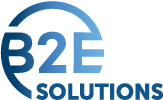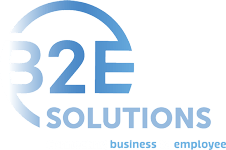A strong employee onboarding program is essential to retaining top talent and setting the tone for a productive, engaged workforce. Effective onboarding goes beyond first-day orientation and paperwork — it’s a strategic process that helps new hires feel welcomed, informed and prepared to contribute. With this comprehensive new hire onboarding checklist, you can streamline HR workflows, accelerate time to productivity and create a more engaging experience for new employees from day one through their first six months.
Why Structured Employee Onboarding Matters
Investing in employee onboarding ensures that the time and resources spent on recruiting and hiring don’t go to waste. A thoughtful onboarding process improves employee retention, enhances job satisfaction and boosts overall team performance. Use the following step-by-step checklist to create a consistent, compliant and people-centered onboarding experience.
Preboarding: Engage before day one
Make a strong first impression before your new employee officially starts — whether they’re onsite, remote or hybrid. Preboarding is your opportunity to build excitement, reduce first-day stress and get administrative tasks out of the way.
To-dos before day one:
-
Send a personalized welcome email to the employee with first-day instructions and agenda.
-
Share a checklist of what they should bring (e.g., government-issued ID, direct deposit info).
-
Provide access to your digital onboarding platform so they can complete required forms electronically.
-
Distribute benefits enrollment materials and introductory HR policy documents.
-
Communicate your company culture and values through videos, handbooks and messages from leadership.
- Be available for questions.
Day one: Make it productive and fun
The first day sets the tone for the employee's experience with your organization. Focus on making your new hire feel welcomed, informed and excited to join the team.
Key activities for the first day:
-
Conduct a structured new hire orientation.
-
Review company mission, values and organizational structure with the new employee.
-
Provide them with a contact list for HR, IT and key department leaders.
-
Offer a virtual or in-person tour of the work environment.
-
Introduce team members and schedule a welcome lunch or virtual coffee break.
-
Add a fun touch — a welcome gift, team trivia or icebreaker activity can go a long way.
-
Distribute access badges, uniforms, laptops and other required assets.
-
Allow time for the new hire to get settled and personalize their workspace.
Week one: Build relationships and internal connections
During the first week, focus on helping the new hire feel like part of the team and allow them time to develop meaningful connections throughout the organization.
Checklist for week one:
-
Schedule informal meet-and-greets with team members for the new employee.
-
Assign them a peer mentor or onboarding buddy for ongoing support.
-
Introduce the new hire to senior leadership.
-
Walk through key systems, processes and expectations relevant to the role.
First 30 days: Reinforce, support and align expectations
While new hires should already understand their core responsibilities, this first month is about reinforcing their role within the team and ensuring they have the information, tools and support to succeed.
What to cover in the first 30 days:
-
Enroll the employee in job-specific training sessions.
-
Have them shadow teammates in key functions and workflows.
-
Set up meetings with cross-functional stakeholders to ensure the new hire understands the broader business impact of their role.
-
Confirm they can access all systems properly.
-
Finalize benefits enrollment (if applicable).
-
Have managers schedule regular check-ins with the employee to discuss early wins and address concerns.
-
Ensure all required HR and compliance trainings are complete.
First 60 days: Deepen role integration and performance
At this point, new hires are becoming more independent. Managers and peers play a key role in helping them stay aligned and moving forward
Key 60-day milestones:
-
Set short-term goals and key deliverables with the employee.
-
Provide feedback on progress and ensure ongoing support.
-
Identify and address any performance or training needs early.
First 90 days: Prepare for the formal review
The 90-day mark is a natural checkpoint. Use it to evaluate performance, align expectations and reinforce continued growth.
90-day review checklist:
-
Evaluate performance against established goals.
-
Gather input from peers and stakeholders on the new employee.
-
Discuss strengths and areas for improvement with management and the employee.
-
Adjust development plans as needed.
First six months: Focus on long-term engagement
Ongoing support beyond the first few months helps boost retention and employee satisfaction.
Six-month goals:
-
Ensure the appropriate people (including HR) maintain regular check-in meetings with the employee.
-
Recognize key achievements and milestones.
-
Request feedback on the onboarding experience to guide improvements.
-
Revisit and update development goals.
Curious how B2E Solutions can help simplify employee onboarding? Find out how our human capital management (HCM) solution, UKG Ready, can help by watching this video or requesting a live demo today.










